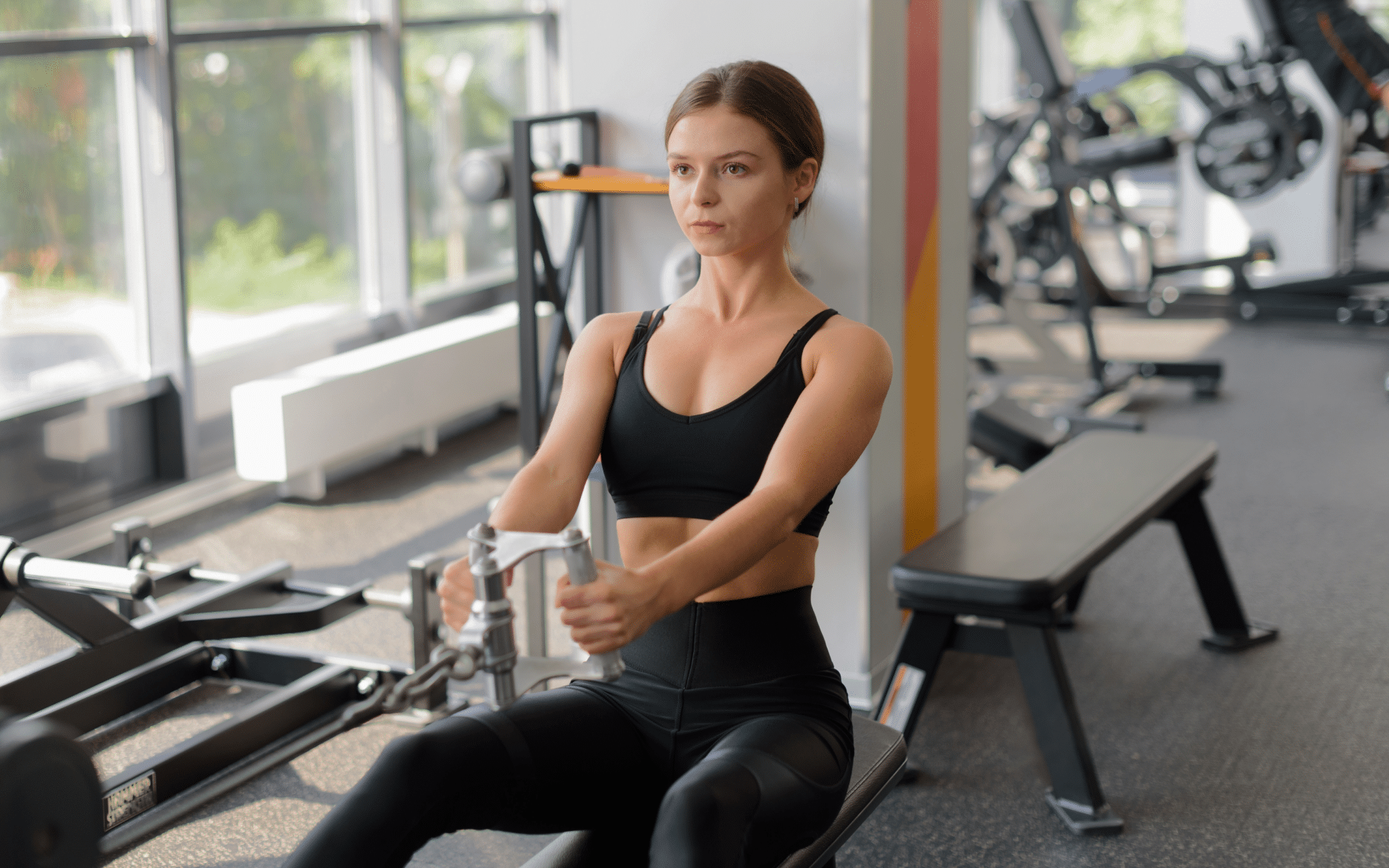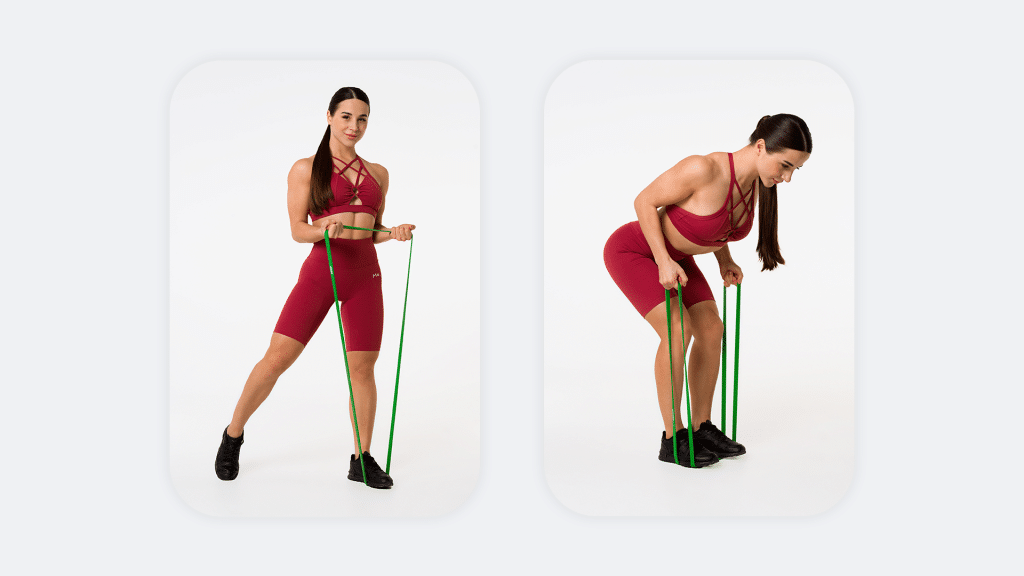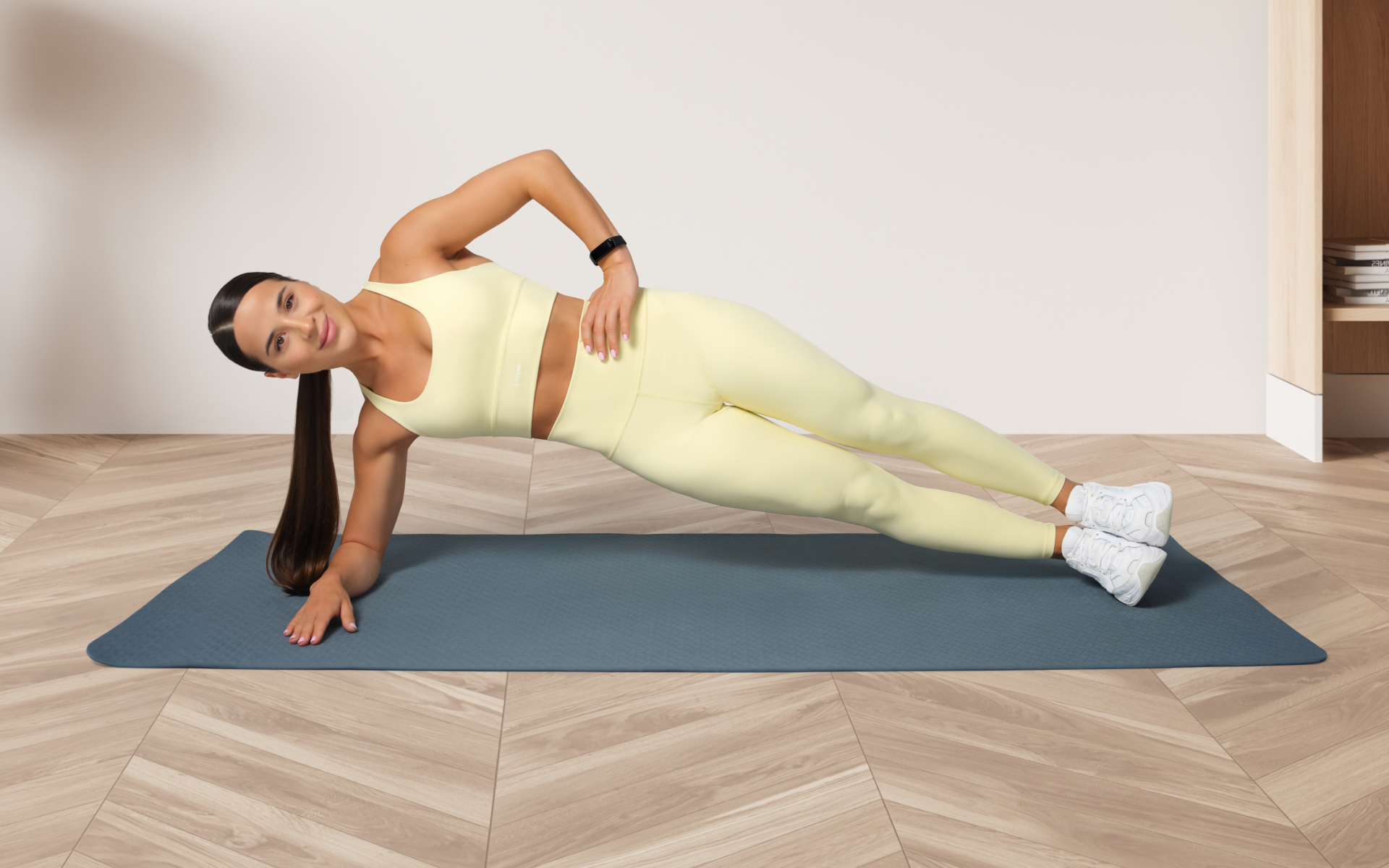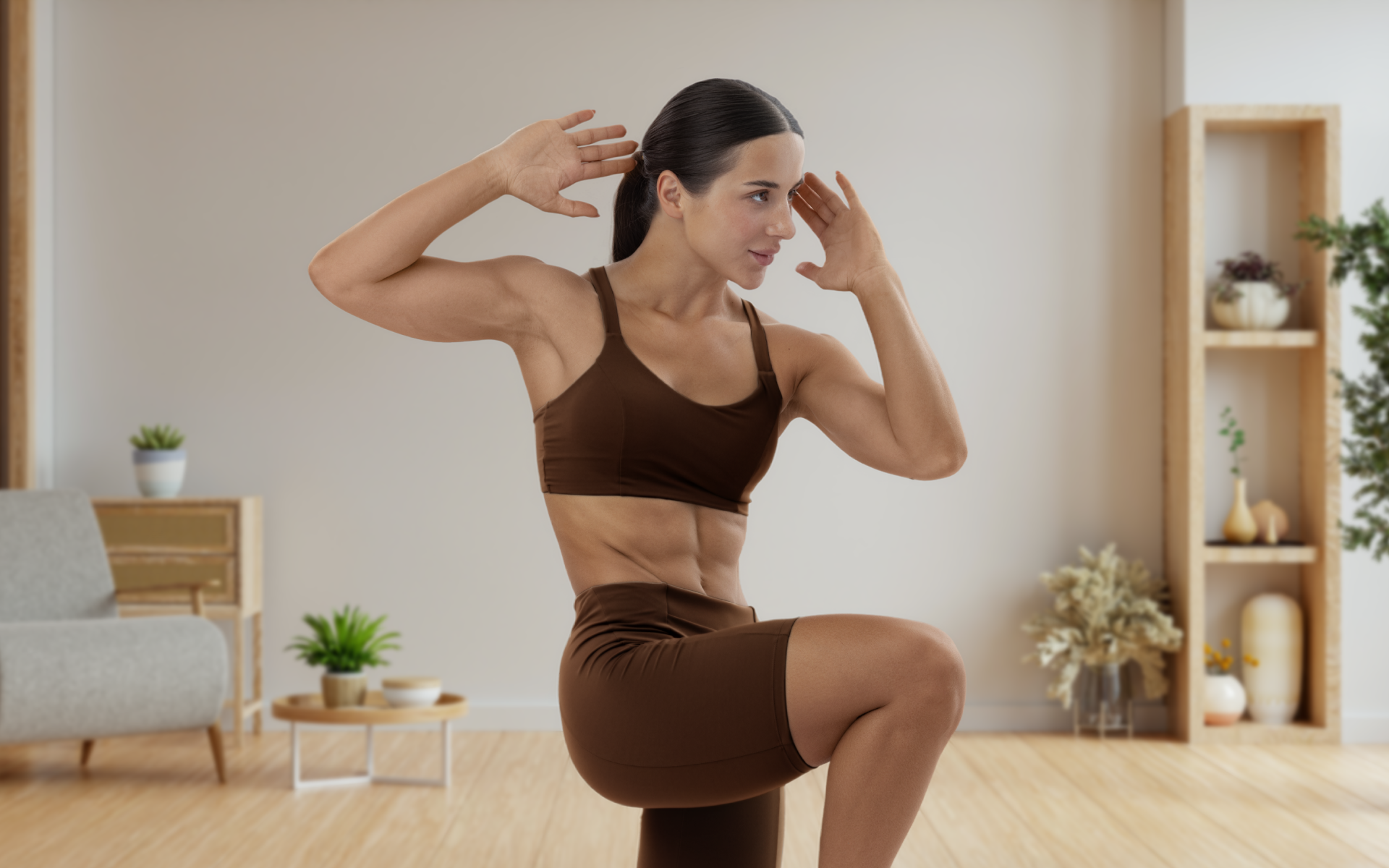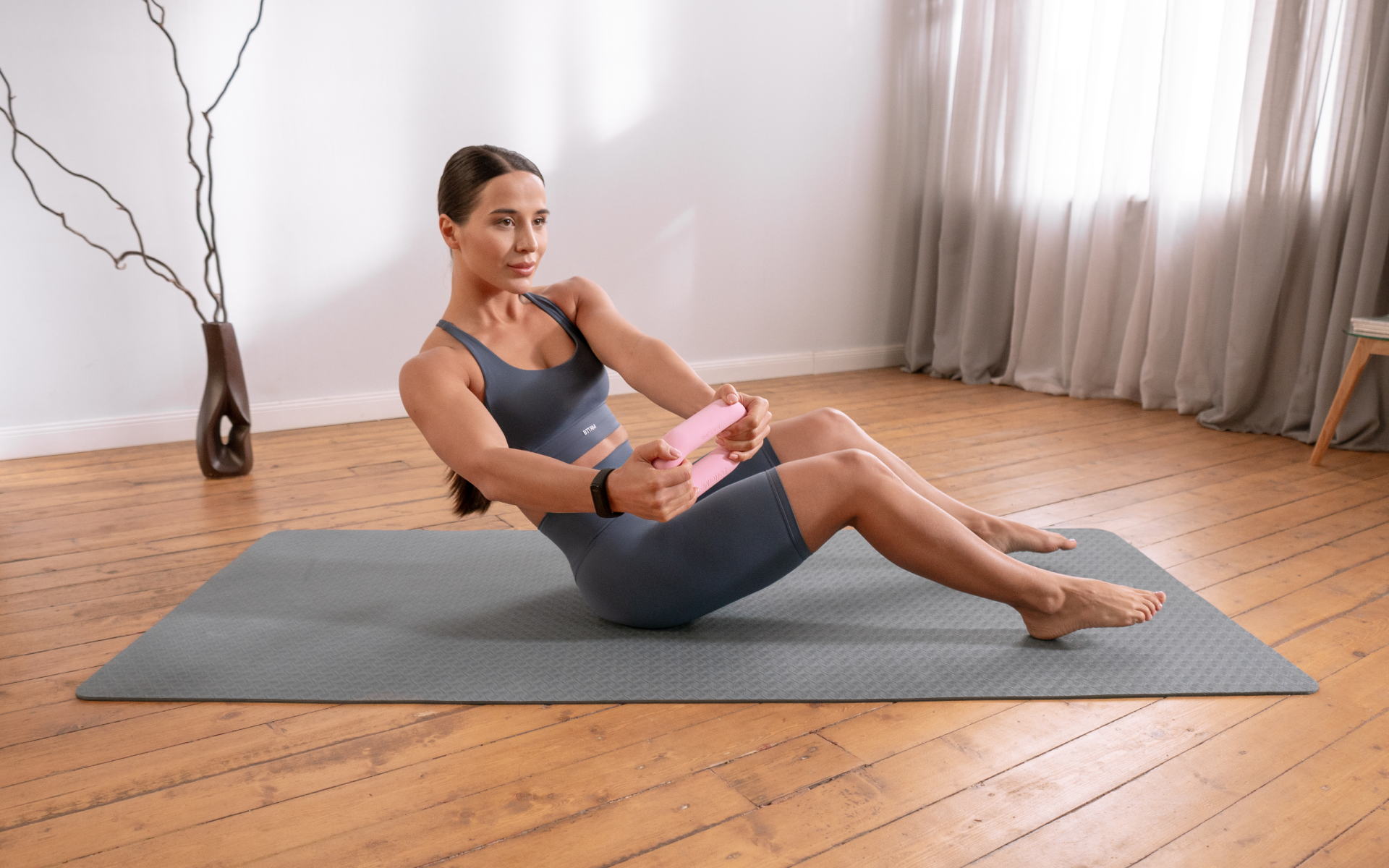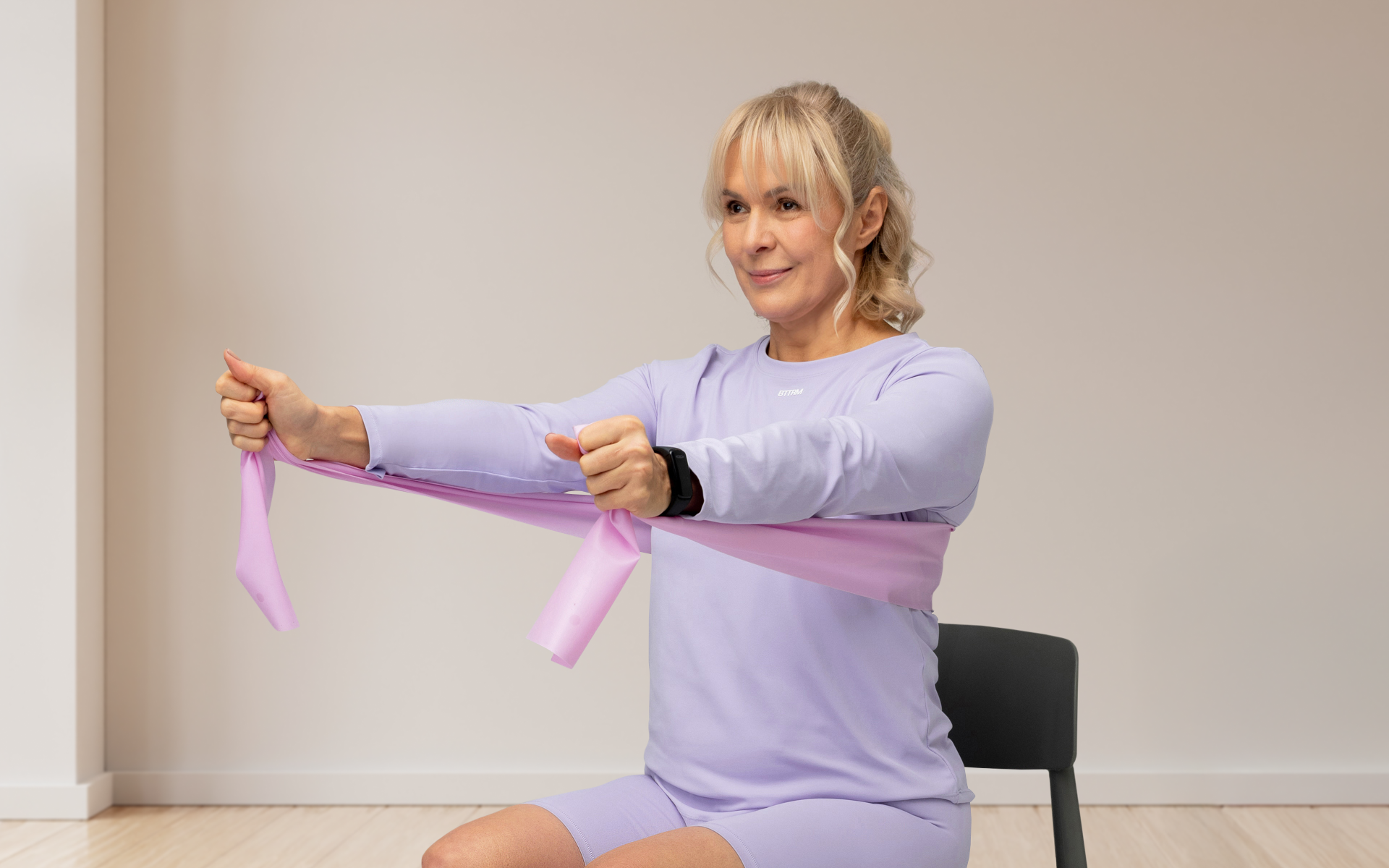Fitness success hinges on more than just showing up—it’s about working at the right intensity. This is where the rate of perceived exertion (RPE) comes in. The RPE scale is a practical and intuitive method to measure the intensity of your workouts without relying on fancy gadgets or external tools. By listening to your body, you can train smarter and get better results.
This guide will take you through the RPE scale, its history, benefits, and how to use it effectively in your fitness routine.
Understanding the RPE Scale and Its Benefits
The rate of perceived exertion (RPE) is a widely recognized and simple way to measure workout intensity. Instead of focusing on numbers such as heart rate or calories burned, RPE is based on how hard your workout feels and considers factors such as breathing, heart rate, muscle fatigue, and overall effort (1).
What Is the Rate of Perceived Exertion?
Definition and Origins of RPE
The concept of RPE was developed by Swedish physiologist Gunnar Borg in the 1960s (2). Borg originally created a 6–20 scale to help athletes and researchers assess exercise intensity. The numbers were designed to align roughly with heart rate levels (e.g. an RPE of 12 corresponded to a heart rate of around 120 beats per minute).
Over time, this scale was simplified into the now-common 1–10 version. This simplified version makes it easier for people of all fitness levels to gauge and apply effort levels to their workouts (3).
- Low RPE (1–4): Represents light effort, such as gentle stretching or walking.
- Moderate RPE (5–7): Reflects a challenging but sustainable intensity, suitable for endurance building.
- High RPE (8–10): Indicates maximal effort, where speaking is difficult and only short bursts of activity are sustainable.
This flexible system helps individuals adjust their workouts according to their fitness level, goals, and how they feel on any given day.
Benefits of Using RPE in Workouts
Customizing Workouts with RPE
One of the standout benefits of RPE is its ability to tailor workouts to your specific needs. Unlike rigid workout plans or device-driven metrics, RPE adapts to your current fitness level and energy reserves.
For example:
- Beginners: Start with exercises at an RPE of 3–5 to ease into a routine without overwhelming yourself.
- Intermediate/Advanced: Train at RPE 7–8 during longer sessions to build endurance or push to RPE 9–10 for short bursts of high-intensity intervals.
RPE also allows you to modify your workout on the fly. If you’re feeling fatigued, lower the intensity by dropping to a lower RPE, which will ensure you avoid overtraining. Conversely, if you’re feeling strong, you can push harder without relying on pre-set rules.
If you wish to free yourself from all the extra pounds that have been weighing you down for way too long, start using the BetterMe: Health Coaching app and overhaul your entire life!
RPE vs. Heart Rate Training
While heart rate monitors are popular for measuring workout intensity, RPE provides a simpler, more intuitive alternative (4):
- No Equipment Required: Unlike heart rate monitors, RPE is based entirely on your perception, which makes it free and accessible.
- Immediate Feedback: RPE reflects real-time effort, whereas heart rate monitors can lag behind during sudden changes in intensity.
- Daily Variability: Stress, hydration, and sleep can all affect heart rate readings, while RPE focuses on how you feel during exercise, which makes it a more adaptable measure.
While heart rate monitoring provides objective data, RPE empowers you to listen to your body and develop a more mindful connection to your training.
Read more: Pilates for Flexibility: Stretching Your Limits
How to Use the RPE Scale Effectively
Understanding how to apply the RPE scale is the key to optimizing your training. The 1–10 RPE scale can be divided into three main categories: low-intensity, moderate-intensity, and high-intensity. Each level serves a different purpose and suits different types of training.
Interpreting Different RPE Levels
Low-Intensity (1–4): Warm-Up and Recovery
Low-intensity workouts are the foundation of a well-rounded fitness program. These activities are easy and sustainable, making them perfect for recovery or preparing your body for more challenging efforts (1).
- Characteristics
- Your breathing is steady and controlled.
- You can maintain a conversation or even sing while exercising.
- Examples
- Gentle yoga or mobility exercises.
- Light walking or slow cycling.
- Active recovery days after intense training.
Incorporating low-intensity exercises at RPE 1–4 helps prevent burnout and supports muscle recovery.
Moderate-Intensity (5–7): Building Endurance
Moderate-intensity workouts challenge your cardiovascular system while remaining sustainable for extended periods. These exercises are ideal for endurance training, weight loss, and general fitness improvements(1).
- Characteristics
- Your breathing is deeper and talking becomes more difficult.
- Your body feels like it’s working, but you’re not completely out of breath.
- Examples
- Steady-state cardio such as jogging or swimming.
- Circuit training with manageable weights and minimal rest between exercises.
- Hiking with a light backpack.
Moderate-intensity sessions should make up the bulk of your weekly workouts, particularly if endurance and overall fitness are your goals.
High-Intensity (8–10): Maximum Effort Training
High-intensity training pushes your body to its limits, which makes it a key component of strength-building and improving anaerobic capacity. These exercises are short in duration but demand maximum effort(1).
- Characteristics
- Your breathing is rapid and deep and talking is almost impossible.
- Your muscles may burn and your energy is spent quickly.
- Examples
- Sprint intervals or hill sprints.
- Heavy weightlifting for 3–5 reps per set.
- High-intensity functional training (e.g. CrossFit or kettlebell swings).
Workouts at RPE 8–10 should be done sparingly as they can be taxing on the body. Ensure proper recovery between sessions to avoid overtraining or injury.
Using RPE Across Different Goals
The beauty of the RPE scale is its adaptability to a range of fitness objectives (5):
- Weight Loss: Maintain moderate RPE (5–7) for extended periods during cardio or circuit training to maximize calorie burn.
- Building Muscle: Train at high RPE (8–9) during strength sessions to promote muscle hypertrophy and strength gains.
- Endurance Training: Alternate between moderate (6–7) and high RPE (8–9) for interval training to improve stamina and aerobic capacity.
This flexibility makes RPE a practical tool for fitness enthusiasts of all levels.
Applying RPE to Various Types of Exercise
The RPE scale is one of the most versatile tools in fitness and can be adapted to virtually any type of exercise. From cardio to strength training to high-intensity interval training (HIIT), RPE provides a subjective yet precise way to gauge intensity and progress. In this section, we’ll look at how RPE works within different workout modalities and how it can elevate your fitness routine.
Advantages of Using RPE Over Time
- Progress Tracking: As you build fitness, activities that once felt like an RPE 7 may eventually drop to a 5, which indicates improved endurance or strength (5).
- Personalized Intensity: RPE takes daily fluctuations in energy levels into account, which makes it more flexible than rigid training plans(5).
- Self-Awareness: Regular use of RPE develops a deeper understanding of your body’s limits and potential.
Comparing RPE with Other Scales
While the RPE scale is widely used, other systems, such as the Borg scale of perceived effort and fitness trackers, also measure intensity (1). Here’s how they stack up:
| Scale/System | Description | Pros | Cons |
|---|---|---|---|
| RPE scale (1–10) | Subjective measure based on effort | Simple, flexible, no equipment needed | May lack precision for beginners |
| Borg scale (6–20) | Original version, aligned with heart rate | Scientific basis | Complicated for general use |
| Heart rate monitoring | Tracks intensity via BPM | Objective data | Requires equipment, external factors influence accuracy |
Tips for Integrating RPE into Your Workouts
- Start With Familiar Activities: Begin using RPE with exercises you know well to better understand your perception of effort.
- Combine With Other Metrics: For greater accuracy, use RPE alongside heart rate data or performance goals.
- Adjust Daily: Recognize that stress, sleep, and nutrition affect perceived exertion—adjust your intensity accordingly.
- Log Your Progress: Keep a workout journal noting your RPE for each session to track improvements over time.
RPE for Cardio Workouts
Cardio exercises focus on improving cardiovascular endurance and stamina. These workouts can range from low-intensity activities such as brisk walking to high-intensity efforts such as sprints (1). Using the RPE scale during cardio will ensure you hit the right intensity for your goals while reducing the risk of overtraining.
Low-Intensity Cardio (RPE 1–4)
Low-intensity cardio is ideal for warm-ups, recovery days, or beginners who are easing into exercise. Activities at this level feel easy and sustainable.
- Examples
- Leisurely walking
- Gentle cycling on flat terrain
- Casual swimming or rowing
At RPE 1–4, your breathing remains steady and you can easily hold a conversation. This intensity is great for promoting blood circulation and recovery.
Moderate-Intensity Cardio (RPE 5–7)
Moderate-intensity cardio is the cornerstone of endurance training, helping build stamina and improve heart health.
- Examples
- Jogging or running at a steady pace
- Swimming laps continuously
- Cycling at a moderate speed or tackling slight inclines
At RPE 5–7, your breathing becomes deeper and talking is more difficult but not impossible. This is the optimal zone for sustained aerobic activity.
High-Intensity Cardio (RPE 8–10)
For athletes and advanced exercisers, high-intensity cardio pushes your cardiovascular system to its limits.
- Examples
- Sprinting
- Hill running or cycling on steep terrain
- Rowing or swimming as fast as possible for short bursts
At RPE 8–10, you’ll feel breathless, with your muscles burning and an inability to talk. These sessions should be short but impactful, helping improve anaerobic capacity and power.
RPE for Strength Training
Strength training benefits greatly from the RPE scale as it helps measure effort and proximity to muscular failure (6). Whether you’re training for muscle growth, endurance, or maximum strength, RPE provides actionable feedback on your performance.
Low RPE (1–4): Warm-Ups or Recovery
During strength training, low RPE levels are useful for warm-up sets or recovery work.
- Examples
- Body weight exercises such as air squats or push-ups
- Dynamic warm-ups before lifting
- Lightweight sets to prepare your muscles for heavier lifting
At this level, the goal isn’t to exhaust your muscles but to improve blood flow and mobility.
Moderate RPE (5–7): Hypertrophy Training
To build muscle, moderate RPE levels are effective (7). Aim for a level where you feel challenged but can complete the set with proper form.
- Examples
- Squats: 3 sets of 10 reps at RPE 6
- Bench press: 4 sets of 8 reps at RPE 7
- Pull-ups: 3 sets to near failure at RPE 7
Hypertrophy training typically involves 8–12 repetitions per set at RPE 6–7. You should feel like you could perform 2–3 more reps by the end of each set.
High RPE (8–10): Strength and Power Training
High RPE levels are reserved for maximal effort lifts, such as deadlifts or squats, where you push close to your limit (7).
- Examples
- Deadlifts: 3 sets of 5 reps at RPE 9
- Overhead press: 4 sets of 6 reps at RPE 8
- Weighted pull-ups: 3 sets to failure at RPE 10
At RPE 8–10, you’re working so hard that completing another rep feels almost impossible. This level is ideal for building strength and testing your limits, but it should be done sparingly to avoid overtraining.
Whether you’re a workout beast or just a beginner making your first foray into the world of fitness and dieting – BetterMe has a lot to offer to both newbies and experts! Install the app and experience the versatility first-hand!
RPE for High-Intensity Interval Training (HIIT)
HIIT alternates between short bursts of maximum effort and recovery periods. RPE is particularly useful in HIIT as it allows you to monitor the intensity of both the work and recovery phases(7).
Work Intervals: RPE 8–10
During work intervals, your goal is to exert maximum effort, reaching RPE 8–10. These intervals should feel incredibly challenging, with heavy breathing and a rapid heart rate.
- Examples
- 30-second sprints followed by walking
- High-rep kettlebell swings
- Burpees performed at full speed
Recovery Intervals: RPE 3–4
Recovery intervals should allow your heart rate to drop and your breathing to stabilize. This gives you enough time to prepare for the next high-intensity effort.
- Examples
- Walking or slow cycling
- Light jogging or marching in place
A typical HIIT session may alternate 20 seconds of work (RPE 9) with 40 seconds of recovery (RPE 3), repeated for 20 minutes.
Read more: Is 10 Minutes of Pilates a Day Enough? Pros, Cons, and Everything Else You Need to Know
Incorporating RPE into Your Workout Routine
RPE isn’t just a measure of effort, it’s a framework for building and adapting an effective workout plan. Here’s how you can use RPE to set goals, structure routines, and track your progress.
- Setting Goals and Adjusting Intensity
Your fitness goals determine the RPE levels you should target during your workouts.
- Weight Loss and General Fitness
For weight loss, you should prioritize moderate RPE (5–7) during cardio and circuit training sessions. Aim for a balance of sustained effort and calorie-burning intervals. Maximizing your calorie burn in any workout will ultimately help your body lose fat as long as you’re eating right!
- Building Strength
For maximal strength, incorporate high RPE (8–9) during heavy lifts. Progressively increase the load over time to challenge your muscles.
- Endurance Training
Endurance athletes should alternate between low RPE (3–4) for recovery runs and moderate RPE (6–7) for long-distance training. High RPE (8–9) intervals can also be added for speed work.
- Daily Adjustments
Life factors such as sleep, stress, and hydration can influence how hard a workout feels. Adjust your RPE levels based on how you’re feeling that day to ensure consistent effort and recovery.
Creating a Balanced Routine Based on RPE Levels
A balanced workout plan incorporates a variety of RPE levels, promoting progress while preventing burnout. Here’s an example of a weekly schedule:
- Monday: Active recovery (RPE 3–4) with light yoga or walking.
- Tuesday: Strength training at moderate RPE (6–7), focusing on hypertrophy.
- Wednesday: Cardio intervals alternating between high RPE (8–9) and low RPE (3–4).
- Thursday: Rest or stretching at RPE 1–2.
- Friday: Full-body strength training at RPE 7–8.
- Saturday: HIIT session alternating work (RPE 9–10) and recovery (RPE 3–4).
- Sunday: Long endurance run at RPE 5–6.
By incorporating varying intensities throughout the week, you will create a comprehensive routine that builds strength, endurance, and recovery.
Tracking Progress with RPE
RPE helps you measure effort and serves as a tool for tracking improvement over time.
How to Track
- Log your RPE for each session in a fitness journal.
- Compare past RPE levels to current ones for the same exercises. For example, if a 10-minute jog used to feel like RPE 7 but now feels like RPE 5, this is a clear sign of improved fitness.
Tracking your RPE helps you stay motivated and ensures your workouts are consistently challenging and effective.
RPE is super easy to use—there are no fancy gadgets needed! It’s great for adjusting to how you feel on any given day, unlike heart rate monitors that can be thrown off by stress or caffeine. Definitely! Whether you’re just starting out or a seasoned pro, RPE works for everyone because it’s all about listening to your body. It takes a bit of practice, but you’ll get the hang of it as you pay attention to things such as your breathing and how tired your muscles feel. Over time, it’ll start to feel second nature. RPE is surprisingly spot-on. While heart rate monitors give you hard data, RPE captures the bigger picture by factoring in how you actually feel during a workout. Absolutely! Beginners can use RPE right away—it’s as simple as noticing when a workout feels easy, challenging, or super tough. Yes. RPE helps you avoid overdoing it, so you can build up gradually and stay safe while still making progress.Frequently Asked Questions
Why use RPE over heart rate monitoring?
Is the RPE scale suitable for all fitness levels?
How do I know if I’m accurately using RPE?
How accurate is the RPE scale compared to heart rate monitors?
Can beginners use the RPE scale effectively?
Can RPE be used for injury prevention?
The Bottom Line
The RPE scale is an adaptable and intuitive system that works across a variety of exercise types. Whether you’re focused on cardio, strength training, or HIIT, RPE helps you find the perfect balance between effort and recovery. Understanding the RPE scale and applying it to different intensity levels can help you tailor your workouts to better suit your goals, energy levels, and fitness journey. By setting clear goals and building a routine around different RPE levels, you’ll stay on track toward achieving your fitness aspirations.
DISCLAIMER:
This article is intended for general informational purposes only and does not serve to address individual circumstances. It is not a substitute for professional advice or help and should not be relied on for making any kind of decision-making. Any action taken as a direct or indirect result of the information in this article is entirely at your own risk and is your sole responsibility.
BetterMe, its content staff, and its medical advisors accept no responsibility for inaccuracies, errors, misstatements, inconsistencies, or omissions and specifically disclaim any liability, loss or risk, personal, professional or otherwise, which may be incurred as a consequence, directly or indirectly, of the use and/or application of any content.
You should always seek the advice of your physician or other qualified health provider with any questions you may have regarding a medical condition or your specific situation. Never disregard professional medical advice or delay seeking it because of BetterMe content. If you suspect or think you may have a medical emergency, call your doctor.
SOURCES:
- The Rate of Perceived Exertion (RPE) Scale Explained (n.d., nasm.org)
- Perceived Exertion: Revisiting the History and Updating the Neurophysiology and the Practical Applications (2022, pmc.ncbi.nlm.nih.gov)
- Relationship between the rating of perceived exertion scale and the load intensity of resistance training (2018, pmc.ncbi.nlm.nih.gov)
- Perceived Exertion: Heart-Rate Relationship During Exercise Testing and Training in Cardiac Patients (1981, researchgate.net)
- Rating of Perceived Exertion: A Large Cross-Sectional Study Defining Intensity Levels for Individual Physical Activity Recommendations (2024, sportsmedicine-open.springeropen.com)
- Convergent Validity of Ratings of Perceived Exertion During Resistance Exercise in Healthy Participants: A Systematic Review and Meta-Analysis (2022, sportsmedicine-open.springeropen.com)
- Application of the Repetitions in Reserve-Based Rating of Perceived Exertion Scale for Resistance Training (2016, pmc.ncbi.nlm.nih.gov)
